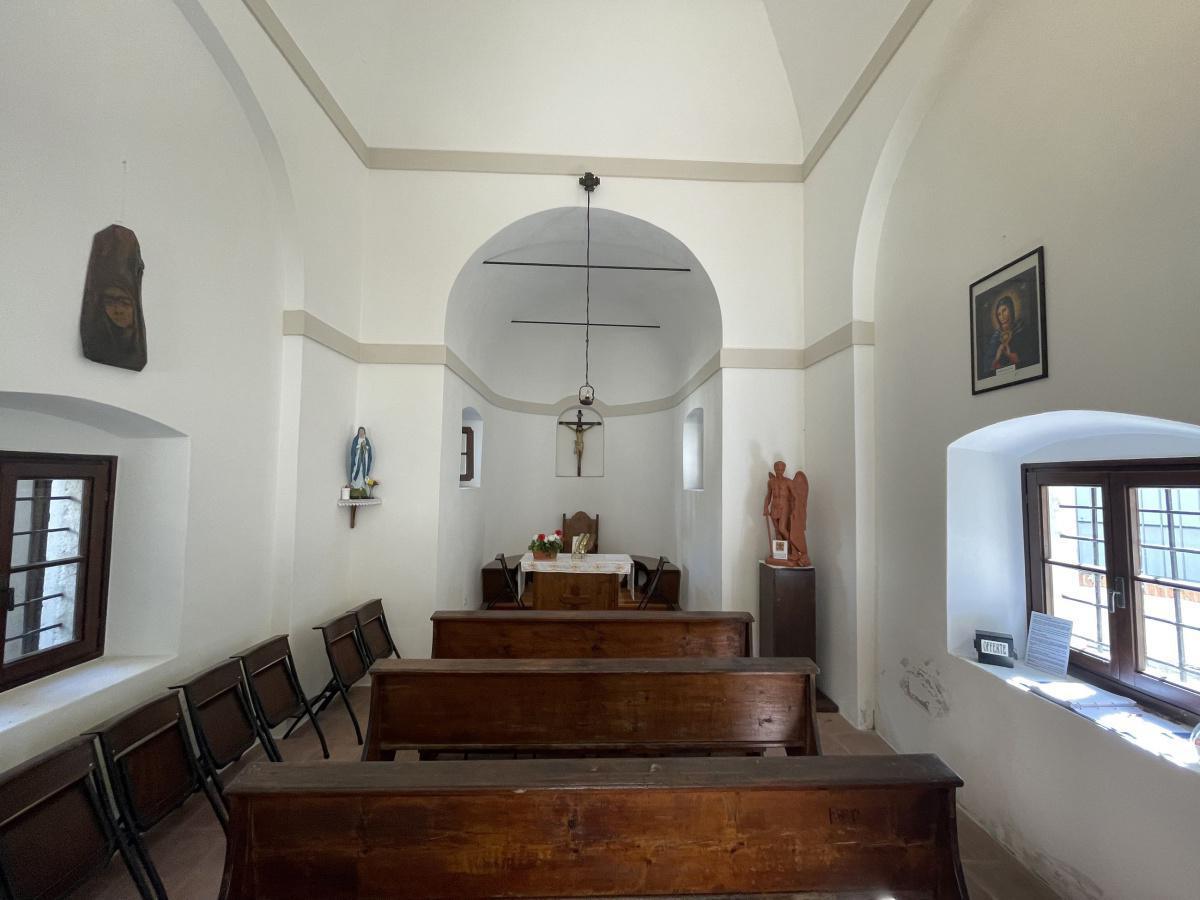
Chiesa di San Michele
Riva del Garda Riva del Garda TN
IT EN DE
Benché oggi nascosta e con la facciata rivolta dal lato opposto della strada, la chiesa di san Michele ha un'antica fondazione. Citata come 'Madonna di san Michele' o Sancta Maria a miraculis in un documento del 1159, era collocata in un'area descritta come fuori le mura, ma il cui toponimo, Riva vecla, fa ritenere fosse centrale nell'antica localizzazione della città. Sede di importanti atti pubblici nel XII secolo, fu destinataria di numerosi lasciti e divenne quindi assai ricca e potente, come la confraternita che ne prendeva il nome e che si faceva carico della cura di malati, dei moribondi e dei suffragi. Nel 1303 ospitò frate Dolcino, predicatore eretico finito sul rogo pochi anni dopo, che raccolse diversi seguaci nel Basso Sarca, processati fra 1333 e 1334 presso il convento di san Francesco a Riva. Già a fine Settecento era in pessime condizioni e stava per essere demolita; fu solo con il secondo dopoguerra che venne ripulita e sistemata dall'Associazione Nazionale Alpini a cui ora è dedicata.
EN
Though hidden today and with the façade facing the opposite side of the street, the church of San Michele is of ancient origin. Referred to as the 'Madonna di San Michele' or Sancta Maria a miraculis in a 12th-century document, it was situated in an area then described as outside the city walls, the place name of which, Riva vecla, implies that it had been a central area in the ancient town layout. A site of important public events in the Middle Ages, it was the recipient of numerous bequests and became quite rich and powerful, like the confraternity that took its name and which was devoted to the care of the sick and dying, and to intercessory prayers. In 1303 it was host to Friar Dolcino, a heretical preacher who was burnt at the stake a few years later, and who acquired several followers in the Sarca Plain, before being tried between 1333 and 1334 at the monastery of St Francis in Riva. The building was already in a state of poor repair at the end of the 18th century and destined to be demolished; it was only after World War Il that is was cleaned up and restored by the National Association of Alpine Troops.
DE
Die vor sehr langer Zeit gegründete Kirche San Giovanni liegt heute versteckt, ihre Fassade ist der entgegengesetzten Straßenseite zugewandt. In einer Urkunde aus dem 12. Jh. wird sie als „Madonna di San Michele" oder ,Sancta Maria a miraculis" erwähnt und befindet sich in einem Gebiet, das zwar als außerhalb der Stadtmauer gelegen beschrieben wird, doch dessen Name - Riva vecla darauf hindeutet, dass es im ursprünglichen Stadtgebiet sehr zentral lag. Im Gebäude fanden im Mittelalter wichtige öffentliche Handlungen statt, und aufgrund zahlreicher Hinterlassenschaften gewann es an Reichtum und Bedeutung, ebenso wie die Bruderschaft, die nach ihm benannt wurde und die sich um Kranke, Sterbende und Fürbitten kümmerte. 1303 hielt sich dort Frate Dolcino auf, ein häretischer Prediger, der in der Basso-Sarca- Region einige Anhänger fand. Ihm wurde zwischen 1333 und 1334 im Kloster San Francesco in Riva der Prozess gemacht und schließlich endete er auf dem Scheiterhaufen. Bereits Ende des 18. Jh.s war das Gebäude in einem äußerst schlechten Zustand und sollte abgerissen werden. Erst nach dem Zweiten Weltkrieg wurde es von der Associazione 2 Nazionale Alpini, von de Spuren der Zeit befreit und restauriert.
